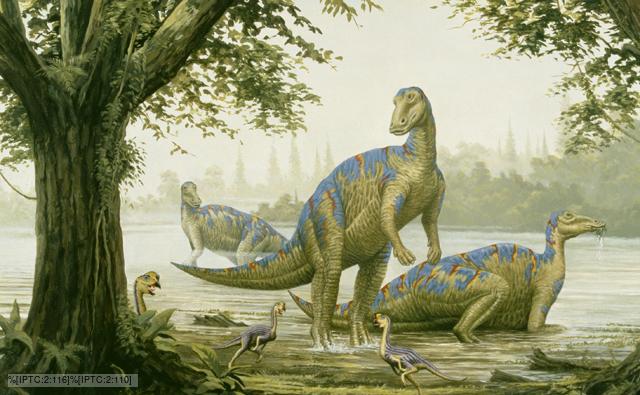
Duck-billed dinosaurs
Duck-billed dinosaurs were successful and common herbivores from the upper Cretaceous period. The secret of their success perhaps lay with the duck-shaped bill that clipped vegetation and the many small teeth that ground it down. There were two types: some with a bony crest on their head for resonating sound and some without. Fossilised nest sites have shown that some species may have travelled to communal nesting grounds to lay eggs, as many bird species do today. Fossils from the many species are found all over modern-day Europe, Asia and North America, and show that some grew to around 12 metres.
Scientific name: Hadrosauridae
Rank: Family
Common names:bulky lizard, Hadrosaurs
Hadrosaurids or duck-billed dinosaurs are members of the family Hadrosauridae, and include ornithopods such as Edmontosaurus and Parasaurolophus. They were common herbivores in the Upper Cretaceous Period of what are now Asia, Europe and North America. They are descendants of the Upper Jurassic/Lower Cretaceous iguanodontian dinosaurs and had similar body layout. They were ornithischians.
Hadrosaurids are divided into two principal subfamilies. The lambeosaurines (Lambeosaurinae) had hollow cranial crests or tubes, and were generally less bulky. The saurolophines, identified as hadrosaurines in most pre-2010 works (Saurolophinae or Hadrosaurinae), lacked hollow cranial crests (solid crests were present in some forms) and were generally larger.
Rank: Family
Common names:bulky lizard, Hadrosaurs
Hadrosaurids or duck-billed dinosaurs are members of the family Hadrosauridae, and include ornithopods such as Edmontosaurus and Parasaurolophus. They were common herbivores in the Upper Cretaceous Period of what are now Asia, Europe and North America. They are descendants of the Upper Jurassic/Lower Cretaceous iguanodontian dinosaurs and had similar body layout. They were ornithischians.
Hadrosaurids are divided into two principal subfamilies. The lambeosaurines (Lambeosaurinae) had hollow cranial crests or tubes, and were generally less bulky. The saurolophines, identified as hadrosaurines in most pre-2010 works (Saurolophinae or Hadrosaurinae), lacked hollow cranial crests (solid crests were present in some forms) and were generally larger.